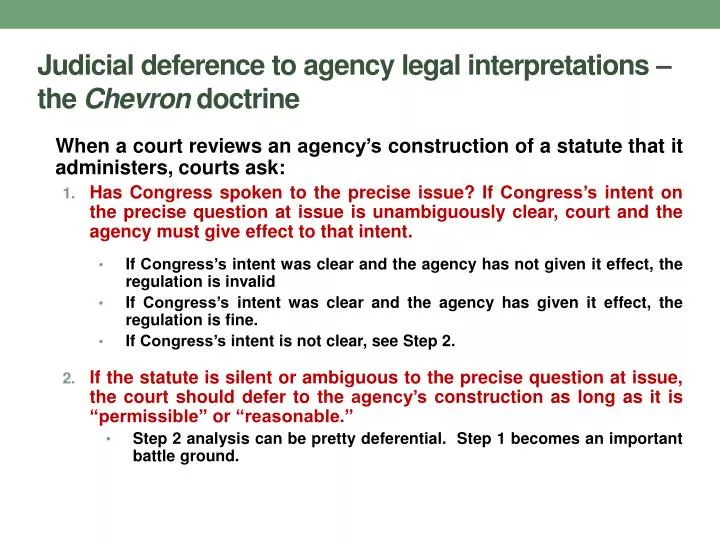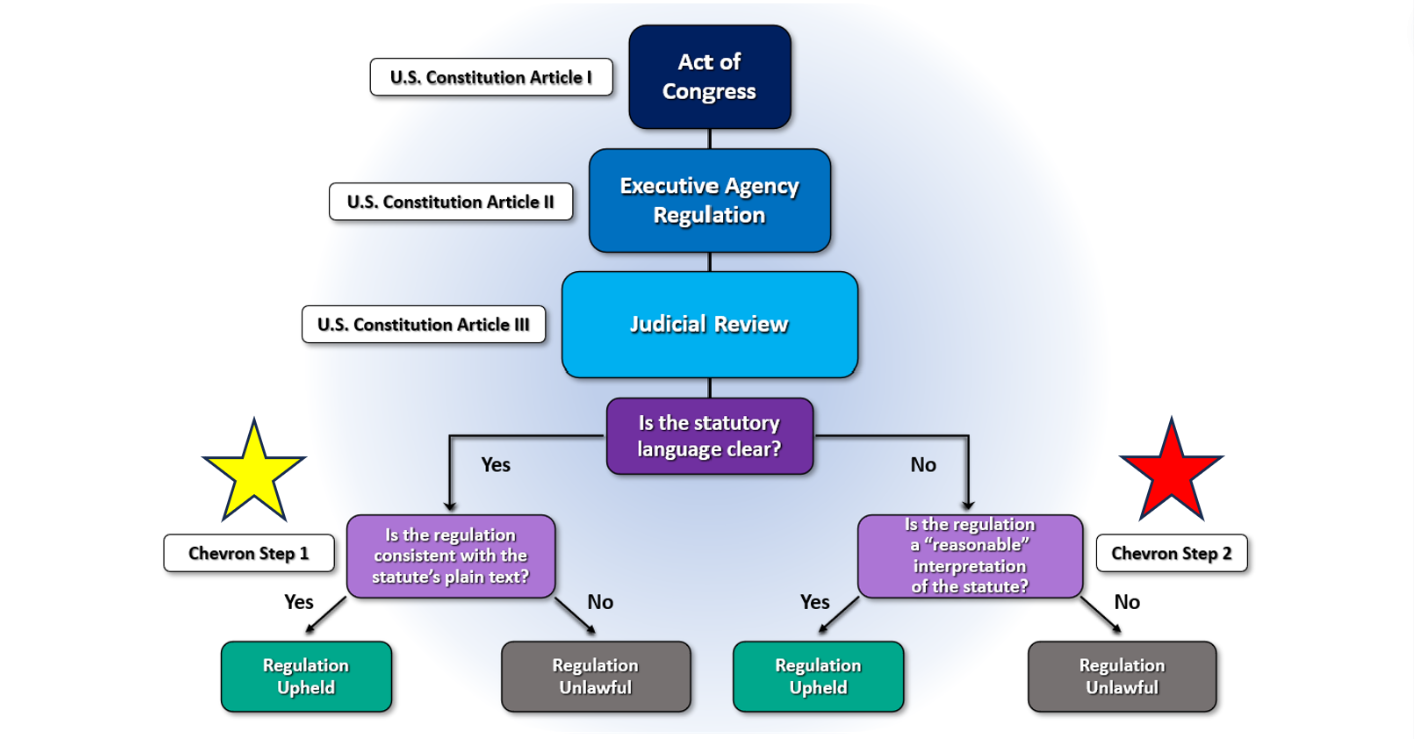Chevron Ruling Legal Precedents: Chevron Ruling Explained
Chevron ruling explained – The Chevron ruling emerged from a complex legal landscape shaped by prior precedents and historical developments. Understanding these precedents is crucial for comprehending the Chevron doctrine’s significance and impact.
The Chevron ruling, which gave deference to agency interpretations of ambiguous statutes, has been overturned by the Supreme Court in a landmark decision. This ruling, known as scotus overturns chevron , has significant implications for the balance of power between the judiciary and administrative agencies.
The Chevron ruling had previously granted agencies broad authority to interpret statutes, but the Court’s recent decision has shifted the balance back towards the courts, requiring agencies to provide a more rigorous justification for their interpretations.
Historical Context
Prior to Chevron, courts had struggled to navigate the balance between judicial deference to agency expertise and the need for judicial review. The Supreme Court’s 1984 decision in Chevron U.S.A., Inc. v. Natural Resources Defense Council, Inc. provided a framework for resolving this tension.
The Chevron ruling, also known as the Chevron doctrine, is a legal doctrine that gives great deference to the interpretations of statutes by the agencies responsible for administering them. In other words, courts will defer to the agency’s interpretation of the statute if it is reasonable, even if the court would have interpreted the statute differently.
This doctrine was established by the Supreme Court in the case of Chevron U.S.A., Inc. v. Natural Resources Defense Council, Inc. in 1984. For more information on the Chevron ruling, please visit chevron ruling.
Legal Precedents
The Chevron ruling built upon several key legal precedents:
- Skidmore v. Swift & Co. (1944): This case established that courts should give varying degrees of deference to agency interpretations of law, depending on the agency’s expertise and the consistency of its interpretation.
- U.S. v. Mead Corp. (1955): The Court held that agencies could interpret their own statutes, but courts retained the authority to review those interpretations for reasonableness.
- Federal Power Commission v. Transcontinental Gas Pipe Line Corp. (1962): The Court further clarified the role of courts in reviewing agency interpretations, emphasizing the importance of agency expertise.
Significance of Chevron Doctrine
The Chevron ruling significantly shaped administrative law by establishing a two-step test for judicial review of agency interpretations:
- Step 1: Courts must determine whether the agency’s interpretation is consistent with the statute.
- Step 2: If the interpretation is ambiguous, courts must defer to the agency’s reasonable interpretation.
This framework has had a profound impact on the relationship between courts and agencies, giving agencies greater authority in interpreting their own statutes.
Application of Chevron Deference

The Chevron ruling has been applied in various cases, setting a precedent for how courts interpret and defer to agency interpretations of statutes. Here are some examples:
In Chevron U.S.A., Inc. v. Natural Resources Defense Council, Inc., the Supreme Court established the Chevron deference standard, holding that courts must defer to agency interpretations of statutes if they are reasonable and consistent with the statute’s purpose.
In Auer v. Robbins, the Supreme Court extended Chevron deference to agency interpretations of its own regulations, holding that courts must defer to such interpretations unless they are plainly erroneous or inconsistent with the regulation.
In United States v. Mead Corp., the Supreme Court limited Chevron deference, holding that courts need not defer to agency interpretations that are not based on the agency’s expertise or that are inconsistent with the statute’s plain meaning.
Factors Considered When Determining Deference, Chevron ruling explained
When determining whether to defer to an agency’s interpretation of a statute, courts consider several factors, including:
- The agency’s expertise in the relevant area.
- The consistency of the agency’s interpretation with the statute’s purpose and plain meaning.
- The persuasiveness of the agency’s reasoning.
- The existence of alternative interpretations that are equally reasonable.
Limitations of Chevron Deference
Chevron deference is not absolute. Courts may decline to defer to an agency’s interpretation in certain circumstances, such as when:
- The agency’s interpretation is not based on a reasonable reading of the statute.
- The agency’s interpretation is inconsistent with the statute’s plain meaning.
- The agency’s interpretation is arbitrary and capricious.
- The agency’s interpretation is inconsistent with the Constitution.
Criticisms and Alternatives to Chevron

The Chevron ruling has been criticized for its potential to result in excessive deference to agencies. Critics argue that the Chevron framework gives agencies too much power to interpret their own regulations and that courts should be more willing to review agency actions de novo.
One alternative approach to judicial review of agency actions is the Hard Look doctrine. Under the Hard Look doctrine, courts will uphold agency actions if they are supported by a rational basis in the record. However, courts will not defer to agency interpretations of law that are unreasonable or arbitrary.
Another alternative approach to judicial review of agency actions is de novo review. Under de novo review, courts will review agency actions as if they were being decided for the first time. Courts will not defer to agency interpretations of law or fact.
Strengths and Weaknesses of Alternative Approaches
The Hard Look doctrine is a more deferential standard of review than de novo review. However, the Hard Look doctrine provides courts with more flexibility to review agency actions than the Chevron framework.
De novo review is a more rigorous standard of review than the Hard Look doctrine. However, de novo review can be more time-consuming and expensive than the Hard Look doctrine.
The Chevron ruling explained the Supreme Court’s approach to judicial review of administrative agencies. This approach has been applied in many cases, including grants pass supreme court. In Chevron, the Court held that courts must defer to an agency’s interpretation of a statute if it is reasonable, even if the court would have interpreted the statute differently.
The Chevron ruling, which defers to agency interpretations of ambiguous statutes, has implications for the Supreme Court’s upcoming decision in supreme court homeless. In that case, the Court will consider whether the government can criminalize sleeping on public property.
The Chevron ruling suggests that the Court may give deference to the government’s interpretation of the statute, which could lead to a ruling against the homeless.
The Chevron ruling explained the framework for judicial review of agency decisions, but its implications extended beyond that case. The Supreme Court’s decision in grants pass supreme court further clarified the Chevron doctrine, establishing a two-step test for courts to determine the validity of agency interpretations.
This test has been applied in numerous cases, shaping the relationship between the judiciary and administrative agencies in interpreting statutes.